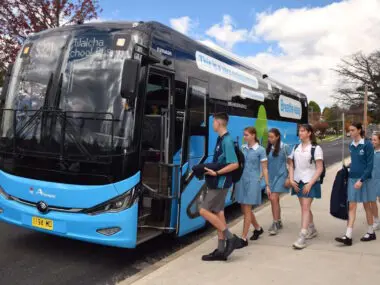NSW Accelerates Zero-Emission Transition with Major Electric Bus Purchase
New South Wales takes a significant leap forward in its public transport decarbonization strategy with a landmark acquisition of 151 new electric buses. This substantial investment marks a crucial step in the state's ambitious plan to transform its entire bus fleet, signaling a cleaner, greener future for commuters and communities across NSW.
Key Highlights
- Fleet Acquisition: NSW government purchases 151 new electric buses to replace diesel and gas models.
- Long-Term Goal: Part of a comprehensive strategy to transition the state's entire 8,000+ bus fleet to zero emissions.
- Environmental Impact: Significant reduction in greenhouse gas emissions and urban air pollution anticipated.
- Strategic Initiative: Aligns with broader state and national sustainability targets for public transport modernization.
A Strategic Move Towards Sustainable Public Transport
The recent procurement of 151 electric buses by the New South Wales government represents more than just an expansion of the public transport fleet—it is a deliberate and strategic move to address both environmental concerns and urban livability. With transportation being a major contributor to carbon emissions, this initiative underscores the state's commitment to meeting its climate goals while enhancing the commuter experience through quieter, smoother, and more efficient travel options.
Scaling Up: The Road to an All-Electric Fleet
This purchase is a critical component of the NSW government's broader vision to transition its entire fleet of over 8,000 diesel and gas buses to zero-emission alternatives. While the scale of this undertaking is substantial, the state has laid out a phased approach, beginning with key urban corridors and expanding progressively to regional areas. The integration of these 151 buses will serve as a testing ground for operational efficiency, charging infrastructure, and maintenance protocols, providing invaluable data to guide future acquisitions.
Expected Benefits and Operational Advantages
Electric buses offer a multitude of advantages over their traditional counterparts. Environmentally, they produce zero tailpipe emissions, which directly contributes to improved air quality in densely populated areas. Economically, although the upfront cost is higher, electric buses boast lower operating and maintenance expenses over their lifecycle. Additionally, passengers can expect a notably quieter and more comfortable ride, enhancing the overall public transport experience.
Comparative Overview: Diesel vs. Electric Buses
To better understand the impact of this transition, the following table highlights key differences between diesel and electric buses in terms of performance, cost, and environmental footprint:
| Criteria | Diesel Buses | Electric Buses |
|---|---|---|
| Emissions | High CO2 and NOx emissions | Zero tailpipe emissions |
| Operational Cost | Higher fuel and maintenance costs | Lower energy and maintenance costs |
| Noise Level | Significantly louder | Quiet operation |
| Energy Source | Fossil fuel-dependent | Electricity (potential for renewables) |
Infrastructure and Implementation Challenges
While the benefits are clear, the transition to an all-electric fleet is not without its challenges. Key among these is the development of robust charging infrastructure, which requires strategic placement of charging stations along bus routes and at depots. Energy grid capacity also needs to be assessed and potentially upgraded to support the increased electrical demand. Furthermore, training for maintenance personnel and drivers is essential to ensure seamless operation and maximize the lifespan of the new vehicles.
Conclusion
The purchase of 151 electric buses by the NSW government is a decisive and forward-thinking step in the state's journey toward a sustainable public transport system. This initiative not only aligns with global environmental targets but also sets a precedent for other regions to follow. As these zero-emission vehicles begin to populate NSW roads, they symbolize a brighter, cleaner future—one where public transport plays a pivotal role in building healthier, more livable cities for generations to come.


